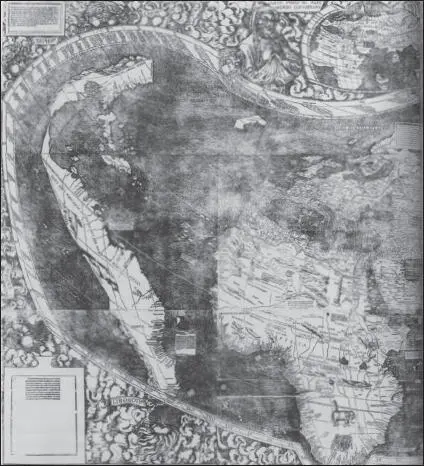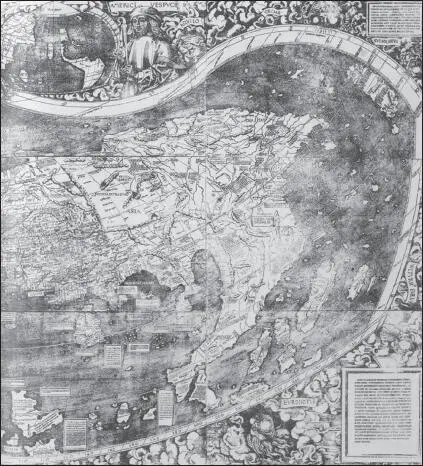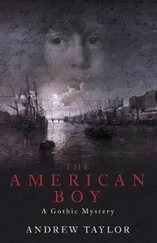THE KNOWN WORLD was expanding in other directions as well in the years shortly before Mercator’s birth. Four years before Columbus’s first voyage, the Portuguese navigator Bartholomeu Dias had rounded the southern tip of the African continent, overturning the accepted Ptolemaic wisdom that the African mainland was connected to a great southern landmass. As the fifteenth century drew to a close, the new Portuguese king Emmanuel – Manuel o Venturoso, the Fortunate – called on Dias to help with the construction of a flotilla of three ships to open a new trade route to India. Leadership of the new expedition was to have been offered to a military commander and government official named Estevão da Gama, but he died before the preparations were complete. Emmanuel turned to Estevão’s twenty-eight-year-old son, who had already distinguished himself in naval engagements with the French in the defense of Portuguese settlements on the coast of Guinea. Vasco da Gama was entrusted with the voyage, which the king hoped would establish Portuguese trading supremacy for generations.
If the magnitude of Columbus’s discovery was initially unappreciated, news of da Gama’s return to Lisbon in September 1499 from Calicut on the west coast of India, more than two years after he had embarked, shook the commercial houses of Europe to their foundations. The Italian merchants who had made fortunes out of their control of the overland trade routes into the eastern Mediterranean faced imminent disaster. “In this I clearly see the ruin of the City of Venice,” declared the wealthy Venetian banker Girolamo Priuli in his diary, 9and he was not mistaken: The prosperity of Venice, which had controlled the European end of the great caravan routes across Asia and Arabia, was one of the casualties of a series of discoveries that continued over the following decades.
The expeditions were driven partly by religion – by the desire to find more Christian communities to counterbalance the growing threat of militant Islam, whose soldiers still lined the southern and eastern borders of Christendom even after the expulsion of the Moors from Andalusia. But the prospect of trade, the quest for wealth, lay behind everything. King Emmanuel himself, writing to Ferdinand and Isabella after Vasco da Gama’s return, declared that the motive of the voyage had been “the service of the Lord our God, and our own advantage” – about nutmeg and the spice trade rather than knowledge.
For someone drawn to cartography, Mercator could hardly have been born at a more propitious moment in the history of geography and exploration. In the east, Dias and Vasco da Gama had shattered the old assumptions by sailing into a sea that should have been surrounded by land, while to the west, a new continent of undreamed-of size and wealth had been discovered, even if it was not yet appreciated.
For centuries, Europe had seemed, to Europeans at least, an oasis of certainty in a vast and unfriendly desert of ignorance. Following these voyages, the continent engaged in an unprecedentedly outward-looking period of exploration; where men had once dreamed of dragons and sea monsters, they found elephants and giraffes. A scramble for land, wealth, and influence that was to double the size of the known world within a few decades had begun.
Practically every voyage added more knowledge of new lands. Progress was faster to the east and in the Indian Ocean, where there was already a network of established trade routes and a ready supply of local guides and pilots, but along the coasts of America, too, the map began to take shape. In 1500, for instance, the Portuguese explorer Pedro Alvares Cabral set out to follow da Gama’s route to India but, in pushing even farther west in search of good winds, became the first mariner to sight the coast of Brazil. 10
Europe was buzzing with gossip and speculation about the new discoveries, but the maps drawn during the early sixteenth century show how gradually geographic knowledge accumulated. The German clergyman-cartographer Martin Waldseemüller produced a world map in 1507 in which the coastlines of Europe, Africa, and the Middle East are all instantly recognizable today – but to the east and west, those confident outlines faded into guesswork and supposition. Waldseemüller drew the Far East with little more accuracy than Ptolemy had managed fifteen hundred years earlier, and America clings to the map’s left-hand edge, a long narrow strip of land that is evidently sketched in with only the skimpiest knowledge. For all the lack of detail and the unfamiliar outline, though, America is there – a separate continent, divided from Asia by the waters of the Pacific Ocean. Waldseemüller’s map was the first to suggest that what had been shown before as a collection of islands off the coast of Asia was actually a single landmass.
Parts of the eastern coast of North America had been surveyed and mapped by the turn of the century, particularly by the Florentine explorer Amerigo Vespucci, and the title Waldseemüller chose for his map indicates the two sources on which he relied. It was drawn, he said, “secundum Ptolomei traditionem et Americi Vespucii aliorumque lustrationes” (according to the account of Ptolemy and the voyages of Amerigo Vespucci and others). By then, Vespucci had led several expeditions down the east coast of the vast new land, seeking financial backing wherever he could find it, and sailing sometimes under the Spanish flag, sometimes under that of Portugal. He had none of Columbus’s obsessions with Cathay or the terrestrial Paradise, and declared that the lands far to the west were a discovery which “it is proper to call a New World.” 11
No European had yet seen the west coast of the Americas, and in this section of the map, Waldseemüller’s guesswork was amazingly accurate. Not until 1513, six years after it was published, did the Spanish explorer Vasco Núñez de Balboa become the first European to set eyes on the Pacific Ocean from the famous “peak in Darien,” 12and another nine years passed before Ferdinand Magellan’s expedition arrived back in Spain after sailing across that ocean. The presence of the then-unknown Pacific on Waldseemüller’s map is one of the great mysteries of cartographic history. Perhaps he had access to more information, now lost, from Vespucci’s expeditions, or, more likely, perhaps he simply drew his conclusion from Vespucci’s belief that America was a completely new world. Whatever his motive, Waldseemüller named the continent America on his map in Vespucci’s honor. “I do not see why anyone should object to calling it after Americus the discoverer,” he declared in the book that accompanied his map. 13Waldseemüller sold more than a thousand copies of his map and his book – enough to establish the name America in people’s minds, though when he realized his mistake a few years later, he tried to give Columbus the credit he deserved. *


Martin Waldseemüller’s World Map, 1507
Library of Congress, Washington, D.C.
Fifteen years after Waldseemüller’s map, the first known circumnavigation of the globe was completed 14– the crucial final proof, if any were needed, that the world was round. Ferdinand Magellan left Seville in late September 1519 with the commission of King Charles I – later to be the emperor Charles V – and a ragtag and bobtail fleet of five aging ships, crewed by the sweepings of the Spanish docks. As a young man, according to some reports, he had been a pupil of Martin Behaim; if so, the return of his expedition after a full three years at sea proved both the strengths and the shortcomings of his teacher’s ideas. Behaim had been right about the shape of the world – but disastrously wrong about the lands that lay on its surface. Magellan had sailed around a continent that Behaim never dreamed existed. He died shortly afterward in a skirmish with natives on a Pacific island, but the return in 1522 of the Victoria , sole survivor of his flotilla, was the inspiration for a succession of Spanish probes up the western coast of South America.
Читать дальше














